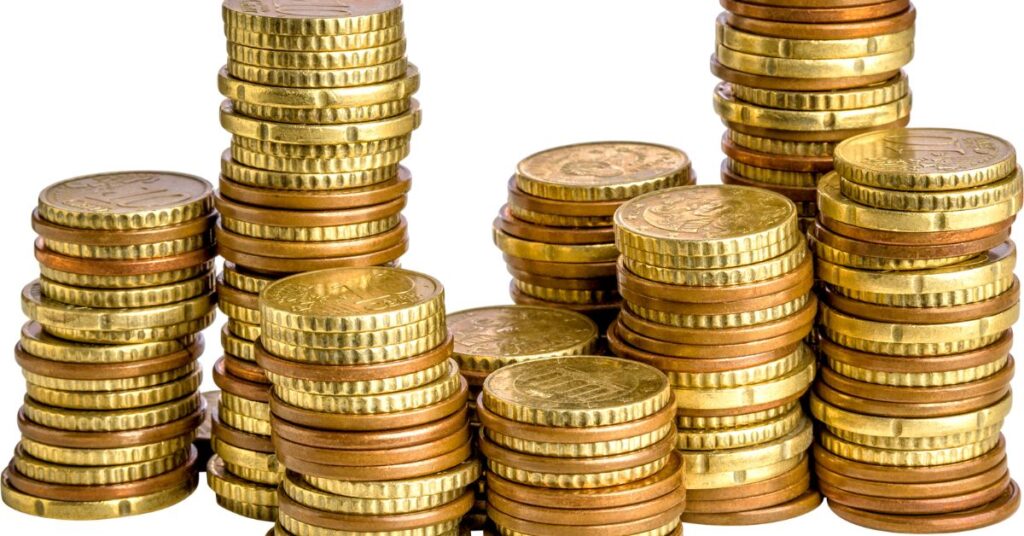Introduction
Investing in gold coins is a timeless strategy that appeals to both seasoned collectors and new investors alike. Gold, a highly valued precious metal, holds intrinsic value and has been used as a form of currency, investment, and collectible for centuries. Understanding the value of gold coins is crucial, whether you’re looking to enhance your investment portfolio, secure your wealth, or indulge in the hobby of coin collecting. This blog aims to guide you through the intricate details of gold coin valuation, ensuring you have the knowledge to make informed decisions.
Gold coins are not just simple pieces of metal; their worth encompasses more than just the current gold price. They are steeped in history and artistry, making them highly desirable to collectors and investors. Recognizing the factors that determine their value can significantly impact your financial decisions and investment outcomes. This blog explores the different types of gold coins, the elements influencing their value, how to assess their authenticity and worth, and where to get them accurately valued.
Types of Gold Coins
Gold coins can broadly be categorized into two types: bullion coins and numismatic coins. Bullion coins are primarily purchased for their metal content—their value closely tied to the current gold market price. They are typically issued by government mints and include well-known examples like the American Eagle from the USA and the Canadian Maple Leaf. These coins are recognized for their purity and weight and are a staple in investment portfolios.
On the other hand, numismatic coins are valuable beyond their metal content. These coins are prized for their rarity, historical significance, and aesthetic appeal, often fetching prices well above their intrinsic gold value. Collectors and historians cherish numismatic coins, making them an intriguing but more complex investment. Understanding the distinctions between these types of coins is fundamental to navigating the world of gold coin investment and collecting.
Factors Influencing Gold Coin Value
Several key factors influence the value of gold coins. Firstly, the purity of the gold significantly affects their worth. Purity, measured in karats or fineness (parts per thousand), denotes the proportion of gold relative to other metals in the coin. For instance, a coin with a fineness of 999 has 999 parts gold out of 1000, making it highly pure.
The weight of the coin is another critical factor. Typically measured in troy ounces, the weight determines how much gold the coin contains, which is a direct indicator of its base value. However, the market price of gold is perhaps the most fluctuating factor affecting the value of gold coins. The gold price is influenced by numerous global economic factors, including inflation rates, currency value changes, and economic uncertainties, which can lead to frequent changes in coin prices.
Moreover, the collector’s value and rarity of the coin can elevate its worth significantly. Coins that are rare, have historical significance, or are part of a limited issue often carry a premium price. This collector’s value can be subjective and varies widely between collectors and markets, making it a fascinating aspect of coin valuation.
Assessing the Value
To accurately determine the value of a gold coin, one must first verify its authenticity. Counterfeit coins are a real threat in the market, so understanding how to check for genuine articles is paramount. Simple tests can be conducted at home, such as the magnet test (gold is non-magnetic), or more sophisticated methods like acoustic testing, which involves analyzing the sound made by the coin when struck.
Tools for weighing coins and testing their purity are also essential. Scales accurate to at least one-tenth of a gram and purity testing kits, which can include electronic testers or acid tests, are vital for anyone serious about their gold coin investment. Additionally, staying informed about the current gold prices and coin values is crucial. Resources such as financial news websites, coin collector guides, and official mint releases provide valuable information for keeping up-to-date with market trends and coin valuations.
Where to Get Coins Valued
When it comes to getting your gold coins valued, it’s important to approach reputable dealers or auction houses known for their expertise and integrity in the field. These professionals can provide accurate assessments based on the latest market conditions and collector trends.
Additionally, certification and appraisal services offer another layer of validation, providing official documents that attest to the coin’s authenticity and value, which are especially useful for insurance or resale purposes.
Conclusion
Understanding the value of gold coins is an enriching endeavor that combines financial savvy with a touch of historical intrigue. Whether you are an investor seeking to bolster your portfolio or a collector in search of rare pieces, recognizing the factors that influence gold coin value is essential. From assessing the purity and weight to understanding the market dynamics and historical worth of your coins, each step is vital in the valuation process.
With the right knowledge and resources, investing in gold coins can be a rewarding and profitable experience.Gold coins offer a unique blend of beauty, history, and value, making them more than just an investment – they are treasures that hold stories and legacies. As you delve into the world of gold coin collecting and investing, remember that each coin is a piece of art, and its value can be appreciated in more ways than one. Contact us for more information.

